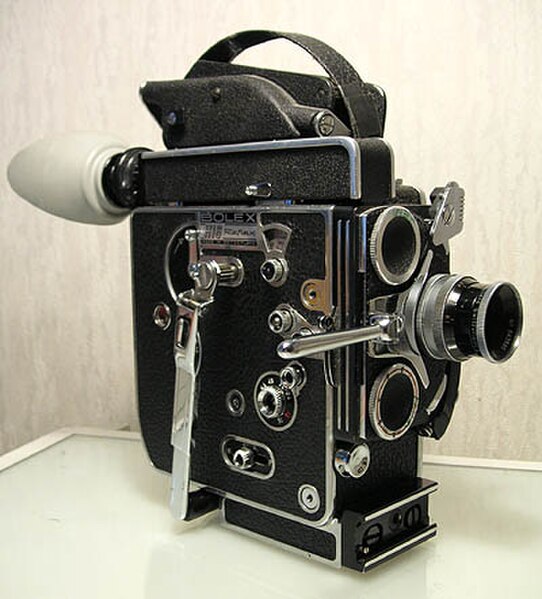The Mutoscope is an early motion picture device, invented by W. K. L. Dickson and Herman Casler and granted U.S. patent 549309A to Herman Casler on November 5, 1895. Like Thomas Edison's Kinetoscope, it did not project on a screen and provided viewing to only one person at a time. Cheaper and simpler than the Kinetoscope, the system, marketed by the American Mutoscope Company, quickly dominated the coin-in-the-slot peep-show business.
An 1899 trade advertisement
Mutoscope at Herne Bay Museum
Mutoscope in San Francisco antique arcade
A film – also called a movie, motion picture, moving picture, picture, photoplay or (slang) flick – is a work of visual art that simulates experiences and otherwise communicates ideas, stories, perceptions, feelings, beauty, or atmosphere through the use of moving images. These images are generally accompanied by sound and, more rarely, other sensory stimulations. The word "cinema", short for cinematography, is often used to refer to filmmaking and the film industry, and the art form that is the result of it.
An Anschütz electrotachyscope American Scientific, 16/11/1889, p. 303
A famous shot from Georges Méliès Le Voyage dans la Lune (A Trip to the Moon) (1902), an early narrative film and also an early science fiction film
Salah Zulfikar, one of the most popular actors in the golden age of Egyptian Cinema
This 16 mm spring-wound Bolex "H16" Reflex camera is a popular entry level camera used in film schools.







